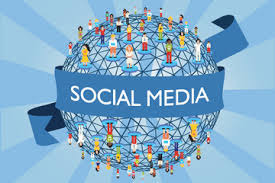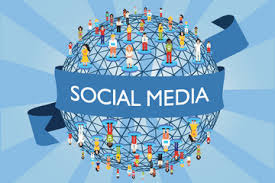Erik Qualman's Blog, page 633
July 17, 2013
3 Small Businesses who Leverage Mobile to their Advantage

Most businesses understand the importance of having marketing goals, a content strategy, and even a social media strategy. Unfortunately some forget that mobile needs to be considered along with each of these, whether it’s to amplify marketing goals, extend content legs onto mobile, and/or leverage social where people are (everywhere they are). Small businesses are not at a disadvantage; they have the same tools in their toolbox. Let’s take a look at a few examples of how small businesses are utilizing mobile to their retail and sales advantage.
Mobile Payment: Rebecca’s Cafe: Rebecca’s Cafe, a small little cafe at the bottom of my office building (with other locations too) has made it simpler for me to get my morning coffee, especially when I’m in a rush. Why scrounge to the bottom of my bag for my wallet, when I can whip out my Level Up app, since my cell is always in hand, and just click to pay within seconds. Rebecca’s Cafe has made it convenient for their customers to keep track of their payments, earn points for that free coffee, and spend less time hassling with their wallets.
Mobile Payment: Lori Magno: Lori Magno, a friend and jewelry artist, was quick to hop on the mobile payment wagon. She realized it was simpler to use Square on her iPad to make quick and easy credit card transactions when selling her amazing jewelry. It not only avoids the pesky “oh I don’t have any cash on me, ” or “I only have a credit” to “no problem, just swipe here,” to ensure she achieves her sales and doesn’t lose customers.
Responsive Design and Click to Call: Goldberg Law: Lane Goldberg of Goldberg Law saw the need of a mobile friendly website since most individuals are on the go and doing their research from their phones or tablets. It makes it easier for people to quickly look into what his law practice offers, hours of service, how to reach him easily and even dig deeper into his blog content. In addition, Lane made it even easier for people to contact him, by adding a “click to call” action button. Such a simple thing, but so many people forget that not allowing your phone number to clickable can be a hinderance to a phone call…and even more so, a potential customer.
These three businesses are three of many who are doing a great job at adapting to the mobile landscape.
A pro tip I advise when considering to enter mobile is that your business doesn’t need to do everything, but should prioritize what is most important to reach your audience, and for your audience to reach you.
Further Reading:
http://www.experiencedmg.com/4-exampl...
http://smallbiztrends.com/2013/06/sav...
http://blogs.citrix.com/2013/06/20/5-...
[image error]
Some Celebrities Sure Like Twitter

Because of Twitter and the celebrities that use it, the word “tweeting” is no longer synonymous with birdsong.
Twitter is a social media powerhouse that has climbed the popularity ranks due to people of all walks of life sharing and following tweets. So, why is it particularly popular with celebrities and which famous names have the most followers?
The Top 5 of Twitter
Considering there are more than 550 million active Twitter users, it’s no wonder celebrity tweets gain a ton of attention. Getting more and more followers with every 140-character tweet they make, which celebrities are at the top of the Twitter chart?
1. Justin Bieber – That’s right, Bieber Nation takes the top spot with just under 40 million followers. Since Justin joined Twitter 4 years ago, he has received an average of 32,000 followers a day. That’s some major tweeting.
2. Lady Gaga – A close second in the Twitter race is Lady Gaga with 37 million followers. That breaks down to an average of 25,000 followers going Gaga each day since she joined over 5 years ago. Since then, she has made roughly 2,600 tweets.
3. Katy Perry – Pop star Katy Perry makes the top 3 with just over 36 million Twitter followers. Considering she has made 4,500 tweets since she joined the social media craze 4 years ago, that comes out to 7,900 followers for every tweet.
4. Barack Obama – President Obama is tweeting his way through his second term as President of the United States with 31 million active followers. In fact, although he’s busy running the country, he still receives over 30,000 new followers a day.
5. Rihanna – Music artist Rihanna is the 4th musician out of the top 5 that are leading the Twitter charts. With 29 million followers and counting, Rihanna receives 10,000 new followers each and every day.
Twitter and Celebrities: Mutually Beneficial
Sure, one tweet puts most celebrities in the spotlight for days on end, but what else do celebrities have to gain from Twitter other than being able to speak their minds in an open forum?
The Fan Connection – Unlike fan websites and fan mail, Twitter connects celebrities to millions of their fans in real time with just one tweet. And, staying connected with fans is crucial for celebrities. Not only is a celebrity’s fan base directly connected to their success, but most celebrities care about their fans and want to keep them updated.
Celebrity Causes – Many celebrities run charities or are connected with important world issues and other causes. What better way to inform people about a cause or raise money for a charity by tweeting it to millions? Celebrities do just that everyday.
Tweeting for Profit – When a celebrity simply exclaims how much they love a certain product in a tweet, they aren’t just letting the masses know which brands they like, they’re making thousands of dollars in brand advertisements.
As the number of active users keeps growing, so will Twitter’s popularity with celebrities. So, tweet away and see if you can reach celebrity status.
Photo credit: video.cinestars.com
About the Author: Adam Groff is a freelance writer and creator of content. He writes on a variety of topics including personal health, loans from billfloat, and social media empires.
[image error]
July 16, 2013
Creating a Social Voice

Social media is one of the most effective means of promotion and customer engagement for companies. Utilized as customer service opportunities or simply as a means of creating an active community of followers interested in your company (the latter opportunity is the ultimate goal) social media provides countless opportunities for companies to engage with their consumers. Whatever the aim of your social media profile, you should ensure that the way you engage with customers reflects your company values.
Communication on social media is generally informal, for both personal and business exchanges. Even though you might deal in a serious industry, such as insurance or banking, your interactions with customers shouldn’t be too formal. Often, a chatty and relaxed manner encourages the best responses from customers.
If you want to maintain a level of formality about your interactions you can still set out some guidelines for your social media communicators, such as not including emoticons within messages. If your brand is more relaxed, encourage your communicators to take this tone with their customers. They could include emoticons in their responses or anecdotes about their own personal experiences.
Of course, a certain level of professionalism must still prevail when communicating on social platforms so be sure to establish what areas are and are not appropriate to talk about with, with customers.
One of the main mistakes companies make when starting on Facebook and Twitter is responding to customer service issues with the company name. Online communication is often such a faceless interaction so it’s important to personalise your responses. Encourage communicators to sign off their interactions with their name. This simple step will make a large difference to your customer service. If you personalise your responses to customers not only will it help them to feel like they’re talking to a person instead of a machine but also a person who has a vested interest in their concerns.
Creating a ‘voice’ for your company’s social media interactions is often overlooked in establishing a social presence, however it is one of the most important factors to consider when engaging with customers. Social media executives should work closely together with your company’s branding team (or CEO) to create a ‘voice’ to be used on social media. This is especially important if you have a large team managing your social media platforms as it is important that each respondent on the site engages with the same tone and level of formality.
Social media is a fantastic tool to help you communication with your consumers in an engaging and informal arena. Establishing a voice will help you to build a strong social platform and help your brand stand out from the rapidly increasing crowd!
Written by AO‘s Sarah Murray.
[image error]
July 14, 2013
Investing in an Online Presence


As with most modern day things, an online presence is not only valuable but is completely necessary to aid, and achieve, a successful business plan. Alongside more traditional methods of advertising, such as offline methods involving costly marketing campaigns it is now more vital than ever to investing in online strategies. This can range from SEO to having social media presence, and indeed signals, to use to your advantage.
Many small businesses believe that they cannot compete with some of the bigger players in their field, due to many reasons.
These reasons tend to usually be that they feel that these competitors are better off from a financial standpoint but also that they dominate their markets. Something beautiful about the internet though is the ability to compete for a rightful space online and a direct line and form of communication with your customers.
Many small business owners can feel like they would be throwing money away by investing in a website but when you look at the fact that 97% of internet users search for local businesses online it may be time to have another look at how much money could you potentially be losing by not investing in an online presence.
BIO: Joseph Hill works on behalf of Vistaprint UK, who specialise in marketing products and services for small to medium businesses.
[image error]
July 13, 2013
Can Too Much Tweeting, Sharing Ruin Your Social Media Reputation?

Updating often on social media sites like Twitter and Facebook is one of the preferred methods to use it to your advantage, but it can also ruin your reputation.
There is a fine line to be drawn between tweeting or updating too much, and just the right amount.
Since there is no set number you should be updating each day, it can be difficult to find that line.
Here are some signs that might tell you you’re ruining your social media reputation with too much sharing.
Lack of Quality Content
If you are posting continuously throughout the day, but not providing anything of value, it is hurting your social media reputation.
People who follow you start noticing a pattern of you not providing them anything of interest.
They started following your page or Twitter account for a reason, and when all you’re doing is filling up their feed with nonsense, they’re eventually going to remove or block you.
Promoting Yourself Too Much
While you should post often (but not too much), you have to be careful what you post. If you do nothing but try to promote your own website, blog or products 20 times a day, followers get annoyed and consider it spam.
You also don’t want the wording of your updates to be like a sales pitch.
Combine your updates about your own company with interesting things you have read or mentioning your competition and the good things they are doing. This lets others know you’re not just there to promote yourself.
Useless Tweeting or Updating
Try not to keep your tweets too short or nonsensical.
While it is good to have some be a little more casual and less like a sales pitch, don’t make them one or two-word phrases that make no sense. This confuses your followers, giving them a reason to remove you from their follower list.
Complaints About Your Activity
You may even find that others are complaining about your frequent activity.
Do a search for your business name or username on the social media sites you use most often.
Do you have any mentions that are negative in regards to your activity? If you see anyone talking about how they unfollowed you or are annoyed with how often you update, it’s time to adjust what and how often you’re sharing.
Losing Fans or Followers
This is probably the biggest sign that you’re tweeting too often or sharing a little too much on your social media sites.
If you notice a considerable increase in fans or followers and not many new ones, there is something you’re doing that they are not pleased with. But it’s not too late – you can still turn things around.
In the event you are guilty of any of these things, you might be damaging your personal reputation.
To re-build it, start updating less and adding valuable insight or interesting stories.
Don’t just promote your own business, but mix up you r updates with interactions, comments, retweets and mentions.
r updates with interactions, comments, retweets and mentions.
Photo credit: businessnewsdaily.com
[image error]
July 12, 2013
Taking Social Media Offline: Continuing The Conversation at Conferences
Microphone picture from Shutterstock
Since launching its new service this spring, an online repository of video tutorials for professionals, Skillfeed employees have been regularly in touch with both customers and contributors to bring in new business and interest and fresh content. In late June, they had their first offline opportunity to speak directly to consumers at the HOW Design conference in San Francisco.
In this digital age, you can do most of the legwork and planning from behind your desk. But nothing can replace face-to-face interactions and engagement. Attending big, annual conferences should be a central part of any marketing strategy to serve both your existing community and to discover new audiences for your product or service. The key is to maintain the right balance between reliance on new technology and social media to carry a conversation while still performing some traditional marketing efforts to help increase your overall reach.
In the case of Skillfeed, the social media channels preceded even the launch of the site and service. The hope was to create some buzz and to sign up as many well-known instructors as possible. That way, when the site was ready for public view and consumption, it would be full of compelling content from recognizable names, covering an array of subjects. Facebook, Twitter, and Google Plus did the trick. The outreach team also used those platforms to offer its contributors relevant updates.
Social media was a critical element in the early stages. After the soft launch of the site, the importance of those channels only got reinforced. Skillfeed began to show itself as a two-sided marketplace for people who wish to teach and for those who wish to learn. A great deal of thought went into how to attract these different audiences; reaching them both at once is central to Skillfeed’s social media strategy. That’s why attending HOW, which brings in diverse, design-minded individuals from across the globe, was identified as the right location for Skillfeed’s first real-world exhibition.
Since Skillfeed is exclusively a digital service, the team made sure that all interactions drove people back to the website. They encouraged people to browse the site on the booth’s computer or on their mobile phones and then to provide feedback. The Skillfeed reps drafted a short survey covering which online platforms people preferred, what challenges they face, and which skills they want to work on. Anyone who participated got a complimentary one-week trial with Skillfeed. The honest dialogue and valuable insight attendees gave will go toward helping to shape the product and offerings.
Social media is also a great and useful way to continue those conversations back at home. The Skillfeed team collected information from hundreds of attendees and got dozens of new followers at HOW. Now, the focus goes to delivering courses and opportunities that will appeal to a new crop of customers. Over the next few months, Skillfeed will roll out more courses related to honing presentation skills, a common inquiry from visitors to their HOW booth. When those courses enter the Skillfeed collection, announcements will go out on social media to let new followers know that their requests have been met.
Seeing the way that people sample the products up close, the Skillfeed team got a greater sense of what was working effectively and what needed some more attention. Even the surveys they handed out in person brought in more detailed descriptions than they would have found through circulating the same survey online. The social media editor will be rolling out regular check-ins with the Skillfeed community, for both customers and contributors, as part of a long-term strategy to keep this open dialogue going.
Danny Groner is the manager of blogger partnerships and outreach for Shutterstock and Skillfeed. Learn more with this social media marketing tutorial, courtesy of Skillfeed.
[image error]
July 10, 2013
Social Media as a Crisis Management Tool

Twitter and Facebook might catch a lot of flak for giving people the opportunity to post about their cats and their breakfast and their current outfits, but recent events have once again shown that social media is more than just a parking lot for trivial updates. When crucial, even life-saving information needs to be broadcast, social media is quite possibly the single most effective medium for getting the word out quickly.
Think about it: the go-to route for breaking news in emergency has long been the Emergency Broadcast System (cue the loud beeps and the scratchy test signals). But in this era, people aren’t glued to the main over-the-air TV networks at home or conventional radio in the car. Yet so many people always have their mobile devices handy and on-alert. The sheer volume of users makes social media an extremely powerful emergency broadcast tool (over 2.5 billion users every month between YouTube, Facebook, and Twitter alone).
The infographic gives a bird’s-eye view of the way social media can be used by governments, mainstream media, and the public to make the flow of information instant (and instantly helpful) when help is needed most. It also shows several pinpoint examples of how social media has been an indispensable crisis-management tool, such as the time one Facebook user created a Hurricane Sandy news page that received 191,000 likes and that dispensed loads of information critical for those wanting to know which areas were safe, to identify the whereabouts of their friends and family, and to stay aware of the progress of relief efforts.
Click image to see a larger version
Source: Using Social Media as a Crisis Management Tool
[image error]
July 9, 2013
The top three ways to utilize Facebook for business: An Appliances Online case study

How do you create brand trust and increased sales for an unknown online company? That was the question faced by Appliances Online, a pure play white goods retailer. The answer, Facebook. Utilizing the community potential and advertising opportunities provided by the social platform, Appliances Online successfully achieved a 60% boost in branded search traffic, resulting in a 58% increase in sales driven by branded search.
Engaging Content
The key to any successful social media campaign is great content. As a business, people aren’t necessarily going to engage with you simply because you’re on Facebook (with the exception of posting positive or negative feedback). Similarly, if you just post images of your latest products or bombard users with sales messages they’re unlikely to want to stick around and continue to ‘like’ your page. Appliances Online run fortnightly competitions on their Facebook page in which users play a game before entering their details and ‘liking’ the product they want to win. Competition winners are then announced on a live giveaway streamed in Ustream via Facebook. Fans are also encouraged to upload images to AO’s Facebook page of themselves associating with the brand. For example, when Appliances Online re-launched their brand with a smiley face logo, fans uploaded images of themselves to show engagement with the live stream. The success of this method of fan interaction is shown in the number of Facebook fans with AO recently reaching the one million fan milestone.
Brand Trust
One of the hurdles facing pure play retailers is establishing themselves as a trusted company. Although almost one third of all purchases are made online, online retailers still face the problem of not having a tangible shop that customers can go into and browse products. With concerns over online security continuing to abound, many customers still choose to purchase products from a physical shop, despite it being cheaper online. Appliances Online turned to Facebook to counter these issues developing a customized widget for the site which shows customers how many people ‘recommended’ AO on Facebook and also see positive feedback from real customers enforcing a trust message. If visitors to the site are also simultaneously logged into Facebook they also see if any of their friends have liked the site or certain products. These simple tools helped to create trust by showing images of real people who had bought from the company. Yossi Erdman, Head of Brand and Social, explains what impact this Facebook interaction has for the company. “Facebook creates brand trust for Appliances Online by helping us personalise the customer journey in an unprecedented way. We want every visitor to the Appliances Online website to see at least one Facebook friend who has bought from us or recommended us before. The positive effect on sales conversion on our website was substantial.”
Respond to Customers
While some companies disable comments by customers on their Facebook page, Appliances Online have embraced the conversation which stems from this social interaction. All comments and queries, positive or negative are responded to by a customer service representative with a target response time of 15 minutes or less. Each query is dealt with by the same customer service representative to ensure that issues are dealt with efficiently and are fully resolved. Far from being stiff, corporate responses the comments are friendly and engaging displaying the personality of the company. For positive and negative feedback the customer is asked their order number so that the appropriate feedback can be sent back to the staff member, if applicable. The transparency of Facebook (everyone can read other people’s posts and comments) further helps to contribute to brand trust.
Appliances Online are an award winning example of how an online business can successfully utilize Facebook with a view to increasing sales and conversion. By creating brand trust through their innovative content and developing effective on-site tools AO have translated their social success into results which have directly impacted the bottom line of the company. The next question everyone wants to know, what does the future hold for AO and Facebook? We’ll have to wait and see!
Written by Sarah Murray
[image error]
July 3, 2013
5 Ways to Build Your Brand on Instagram

Instagram is billed as the fun and quirky way to share photos, but don’t let it’s playful exterior fool you. Underneath is a powerful marketing machine if harnessed correctly.
Instagram’s popularity is growing everyday as the site currently hosts 130 million monthly active users with 45 million photos and one billion likes shared per day.
The high user engagement provides a great and easy platform for businesses to put a face to their brand and build customer relationships by simply snapping and uploading a photo.
However to be as successful as possible, here’s a few tricks to keep in mind.
1. #Hashtag It
There’s no easier way to reach out to users than to include hashtags on posts. By using the # symbol followed by a word or phrase, Instagram groups posts into categories and topics that can easily be searched for by users.
Hashtags help brands enter the conversation and get a little free marketing, but make sure to use both brand-specific as well as generic hashtags to reach as wide an audience as possible.
Not sure what hashtag to use? No worries, it’s insanely easy to track hashtags that are trending by using websites like webstagram that stream feeds of the most popular hashtags.
2. Get Personal
Expanding a brand or company into Instagram doesn’t mean every post has to be promotional. In fact it shouldn’t be.
Instagram offers a unique platform to give consumers a snapshot of the behind-the-scenes workings of a company, or even a peak into the day-to-day lives of its employees.
When users get an inside look at what a brand is about, is allows the business to connect with customers on a personal level by adding a human element that ensures users feel connected to more than just a company.
3. A Photo A Day
A popular method for niche companies to gain Instagram exposure is by posting “A Photo A Day” calendars at the start of a month.
Each day of the month has new topic that can be related to the company’s industry and users are asked to post a photo a day for each topic.
Take it a step further by incorporating a contest or giveaway as part of the challenge to help users stay engaged for the duration of the month.
4. Host Contests
For businesses just starting out on Instagram or ones that already have garnered a following, photo contests offer a great way to boost attention for a brand’s Instagram profile.
Many companies offer giveaway contests by asking users to post entries with a specific hashtag or mention the company’s Instagram username so entries can be easily tracked and followed.
A good tip is to give the contest some time and keep users engaged by choosing the best photo from the day or the one with the most likes to feature and spread the word about the contest.
5. Cross Platform Sharing
Not all of a company’s target audience will be on Instagram but they may be on Facebook or Twitter.
By using Instagram’s API companies can link it’s Instagram feed to other social platforms increasing brand visibility and expanding to a wider audience base.
As long as your Instagram feed is regularly updated, linking to other social channels can be extremely beneficial as it provides a constant source of fresh and unique media content for users to interact with.
[image error]
July 2, 2013
Social media Platforms you might be Missing on

The biggest cookie in the internet jar is “social media” and everyone wants a bite of it. Every day new social networking sites are launched in the hope of making it as big as Facebook did. Each offers unique features, some focus on specifics while others are a playground for one and all.

Each site has created a niche for itself and is favored by its members for one reason or the other, but end of the day they are all working relentlessly to turn the world into a global village. So here is a rundown of the numerous social networking sites which may not be as popular as Facebook or Twitter, but they are certainly catching on. It’s time you get to know these virtual hangouts and what they have to offer, for all its worth-you might end up staying and calling them home.
If you are the career minded, workaholic- your social network of choice will definitely be LinkedIn. LinkedIn is the social melting pot of professionals. If the claims of the site owners are to be believed, LinkedIn extends its memberships to more than 35 million people, including executives from almost every Fortune 500 company.
Once a member’s profile is created, invites are sent to all second-degree connection and this goes on as each primary connection added to the contact list adds a few more sub connections of its own to the list. Thus the bigger the circle of connections gets the better the chances of members finding jobs or being spotted by potential employers through primary user’s connections or their sub connections. Profiles focus on members’ professional experience and skills. LinkedIn is a favorite of numerous headhunter agencies. Linkedin also has its own social media app, if you want to use it on your phone.
2. Pinterest
Pinterest is a virtual bulletin board onto which people “pin” photos of what they like, want, desire, know about and what not, with external links. According to research 95% of its contributors and audience are women. The site boasts of having more than 85.5 million users, and is a great marketing, social media, SEO, business, and crafts resource.
A typical Pinterest experience starts with a “pin” which is usually an image or a video of something a member likes or knows about. These pins can be repined and usually have backlinks to other sources. Pins are put up on “boards” which can be secret or public. Members choose the pins they are interested in and pinning them on their specific boards. Pins members wish to use come with “pin it bookmarklet” which makes it possible for them to be pinned or followed.
Following someone or their pins, means their pins show up in a member’s Pinterest home feed. People can choose to follow all of someone’s boards or just the ones they like best. Homefeed is what shows up on the members main page and it includes all the pins and boards they may have created or following on Pinterest.
3. LiveJournal
A social networking site for bloggers or anyone who wants to keep a virtual journal or diary of their lives. Owned by a Russian Group, SUP Media, LiveJournal is frequently used by political personalities for political commentary.
LiveJournal user or journal entry as they are known, has its own web page, where other users can leave comments. The most unique LiveJournal feature is its “friends list,” which makes it a social networking site as well as a blog service. Each user has a friends page, which shows the journal entries of people on friends list. The “User Info” page displays things like contact information, a biography, images and lists of friends, interests, communities and even schools which the user has attended.
At the moment LiveJournal offers accounts on five levels: basic – this level is free and makes up almost 95% of the network; plus – this is a sponsored level and contains a lot of advertising; “early adopters” – this level represents those who registered with the site prior to 14 September 2000; paid and permanent- these accounts are usually never available to the average user. The reason why paid accounts are different from others is because members of this level get to enjoy services like text messaging, “To-do list” feature, Express lane, Voice Post and extra storage space.
4. Google+
Google+ is Google’s answer to Facebook and has so far accumulated over 65 million users and adding more by the minute. It is quite similar to what Facebook has to offer, with the exception that you can group connections into “circles” on your dashboard. Members can host video chats, and follow trending topics. The one unique thing about Google+ is that, members prefer to post photos and topics rather than statuses on their pages.
Just like on Facebook the main activity begins with a user writing on the wall, in Google+ it all starts in the stream. The stream is where people see each others status updates and postings. Members have the liberty to share status updates in a circle or with individual users. Once members make their status update public, anyone in their circle or in whose circle they are can view it. Members can also tag each other by either typing @ or + at the beginning of the person’s name.
5.DeviantArt
Here lies a great online community of artists and art lovers with more than 25.5 million users worldwide. DeviantArt is a great resource and is often used for posting fan art.
Here is how DeciantArt works out, users chose a unique name for their profile. After the name has been registered the site issues them a custom URL where username is replaced by the members chosen moniker. Once this is done the members can easily control their personal art galleries called deviations. Each member has the freedom to further customize their profile such as upload their deviantID and personal details called the Devious Info section.
Members can also write in their Journal, which is a blog discussing their art or anything they feel like talking about. Visitors get to see artworks created by the member on their page and if they like it they can click +deviantWATCH, which is the deviantART equivalent of bookmarking a Web site.
The above mentioned websites provide an excellent platform for connecting with your family and friends. With the amount of spyware in circulation it would be wise to double check privacy settings to optimize your social networking experience.
[image error]






